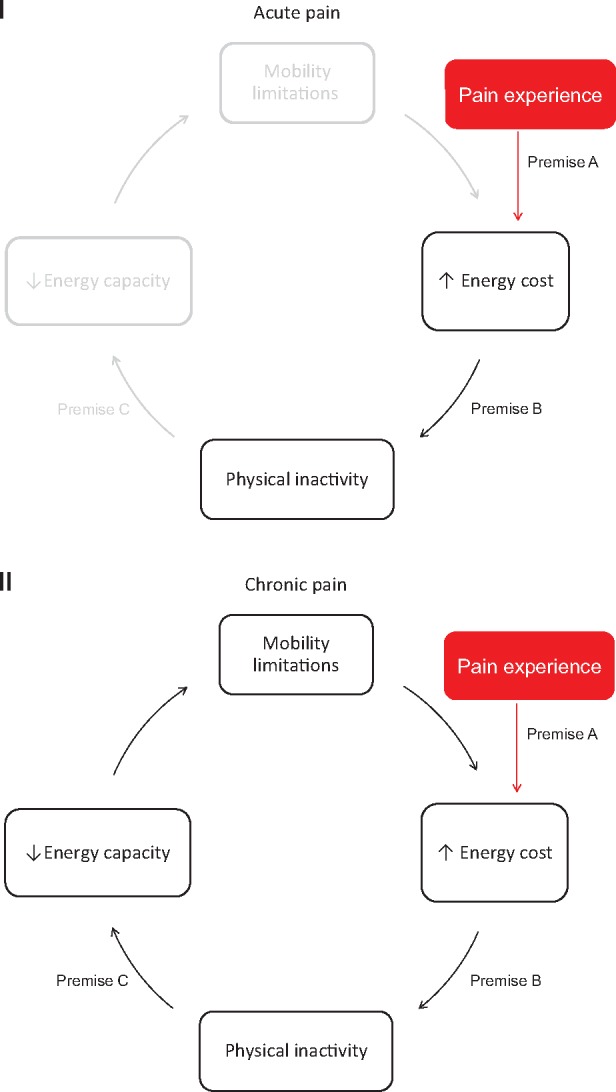Figure 2.

Illustration of the Pain Energy Model with premises denoted. In (I), the impact that acute pain has on this pathway is displayed. Among older adults with painful conditions: A) the pain experience increases the energy cost of mobility (i.e., energetic inefficiency), and B) increased energy cost of mobility contributes to physical inactivity. In (II), the long-term effects of pain are presented. With pain chronicity, C) persistent physical inactivity drives reductions in energy capacity. When energy capacity approaches the energetic cost of mobility, clinically relevant mobility limitations develop. These limitations, in turn, may contribute to increases in energy cost, further driving this disability cycle. Exacerbations of pain (i.e., acute-on-chronic) may also continue to drive this cycle.
